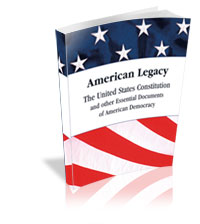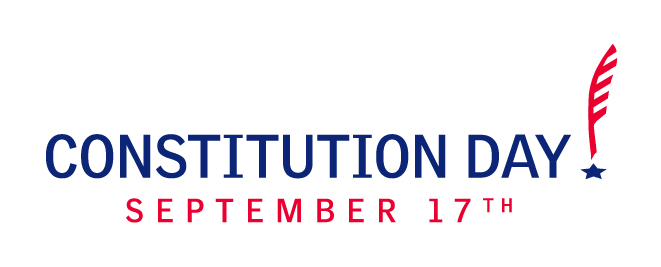| Grade |
Lesson Plan |
|
Pocket Constitution

Ebooks Available!

|
|
|
|
K
|
Matching Game with the U.S. Constitution 
This lesson introduces students to the Constitution. Students participate in a matching game to learn what the Constitution is and what it does for them. They will recognize key images related to the Constitution and its history.
|
|
|
Orb and Effy Learn about Authority 
This lesson introduces the study of authority. Children learn when people are exercising authority and when they are exercising power without authority. Children learn how and why authority is useful in society.
|
|
|
1
|
The Constitution: The Country's Rules 
In this lesson, students develop an awareness of the Constitution by exploring what it is and why it is important. Students examine their classroom rules poster as an introduction to the concept of rules and learn that the Constitution is the law of the United States.
|
|
|
1–2
|
Constitution Day Rap 
This lesson introduces students to important facts about the Constitution and its history. Students create a thirteen-star flag and read or perform the Constitution Day Rap.
|
|
What Is Authority? 
This lesson introduces the study of authority. Students learn two very important concepts: authority and limited government. Students also learn the importance of examining and choosing people for positions of leadership.
Lesson Audio  Teacher Audio Teacher Audio 
|
|
|
3–4
|
What Basic Ideas Are in the Preamble to the Constitution? 
This lesson explores some ideas in the Preamble to the Constitution. Students learn that the power to govern belongs to the people who have created the government to protect their rights and promote their welfare.
|
|
| 4–5 |
How Should We Choose People for Positions of Authority? New
Students learn that under our system of government citizens have to choose people for positions of authority. It is important to know how to choose well. This lesson helps students to identify the requirements of a position of authority and the qualifications a person should possess to fill that position. Students learn a set of intellectual tools designed to help them both analyze the duties of the position and to decide if an individual is qualified to serve in that particular position. During the lesson students practice using the intellectual tools. |
|
|
5–6
|
What Basic Ideas about Government Are Included in the Preamble to the Constitution? 
This lesson explores some of the ideas in the Preamble to the Constitution. Students read the Preamble and develop definitions for the six key phrases in the document.
Lesson Audio  Teacher Audio Teacher Audio 
|
|
|
5–8
|
Remembering 9/11: Building Tolerance 
These lessons asks students to look not just at the events of 9/11 but at the following days and years. The lessons involve students in exploring the parts of a newspaper, the functions of a news article, and the importance of a free press in a democratic society. Classroom activities prompt students to discuss the need for and role of heroes. Students learn how to identify unifying factors in a diverse society, distinguish between fact and opinion, examine different points of view, analyze legal issues that have arisen as a result of the terrorist attacks, and much more. Lesson four, Today’s Hero, also includes activities for grades K–4.
|
|
|
| 6–8 |
How Should We Choose People for Positions of Authority? New
Students learn to identify the requirements of a position of authority and the qualifications a person should possess to fill that position. Students learn a set of intellectual tools designed to help them both analyze the duties of a position and to decide if an individual is qualified to serve in that particular position. In an excerpt from Theodore Roosevelt’s Winning of the West, students learn the characteristics that qualified Lewis and Clark to fulfill the responsibilities of leading an expedition to the West.
|
|
|
|
|
7–8
|
What is the Federal System Created by the Constitution? 
This lesson teaches students about the federal system of government created by the Framers. Students learn about popular sovereignty, federalism, and the supremacy clause of the Constitution.
Lesson Audio  Teacher Audio Teacher Audio 
|
|
|
|
|
7–12
|
9/11 and the Constitution: On American Identity, Diversity, and Common Ground
The anniversaries of the terrorist attacks on the United States on September 11, 2001, and the signing of the Constitution on September 17, 1787, provide us an opportunity to reflect upon who we are as Americans, examine our most fundamental values and principles and affirm our commitment to them, and evaluate progress toward the realization of American ideals and propose actions that might narrow the gap between these ideals and reality. These lessons are designed to accomplish these goals.
|
|
|
|
|
|
9–10
|
Constitution Day Scavenger Hunt with 60-Second Civics New
Fifty-five delegates were present at the Constitutional Convention, which was held in Philadelphia in the summer of 1787. Most students can identify George Washington, James Madison, and maybe even Alexander Hamilton. But what about the other fifty-two delegates? Who were they? How did they influence the convention? In this lesson students will familiarize themselves with the delegates by listening to a series of 60-Second Civics podcast episodes devoted to the Framers of the Constitution.
To Amend or Not to Amend, That's Been the Question…Many Times 
This lesson asks students to examine recent proposed amendments to the U.S. Constitution, analyze them for public policy triggering mechanisms, and compare and contrast them to amendments that have been ratified.
How Was the Constitution Used to Organize the New Government? 
This lesson explains the five major accomplishments of the first Congress. Students learn how the Constitution provided a general framework for the government.
Lesson Audio  Teacher Audio Teacher Audio 
|
|
|
Abraham Lincoln and the U.S. Constitution 
This lesson traces Lincoln's political life during a time of constitutional crisis. It examines Lincoln's ideas and decisions regarding slavery and the use of presidential power to preserve the Union.
|
|
|
|
|
9–12
|
Responsibility and the U.S. Constitution 
In this lesson, students learn about responsibility and apply the concept to segments of the U.S. Constitution.
|
|
|
|
How Should We Choose People for Positions of Authority? New
Students learn to identify the requirements of a position of authority and the qualifications a person should possess to fill that position. Students learn a set of intellectual tools designed to help them both analyze the duties of a position and to decide if an individual is qualified to serve in that particular position. Students apply the intellectual tools to a job description fro president of the Untied States and create a list of some of the characteristics a person should have to fill the position and perform well in that office.
|
|
|
|
11–12
|
Historical Analysis of Constitutional Amendments 
In this lesson, students examine one of six key amendments to the Constitution while considering their historical context. Students create timelines for each amendment that are later combined to fully evaluate and interpret how the Constitution has evolved within its historical context.
What Does Returning to Fundamental Principles Mean? 
This lesson presents a series of quandaries that represent many great ideas and principles that have shaped our constitutional heritage. In each exercise, students apply principles and ideas to a contemporary issue and then take a position and defend their judgments.
Lesson Audio  Teacher Audio Teacher Audio 
|
|
What Is the Role of the President in the American Constitutional System? 
This lesson examines sources of presidential power and ways that checks and balances limit presidential power. Students explain the president's constitutional responsibilities, identify checks on the president's power, and defend positions involving the exercise of presidential power.
|
|
|















